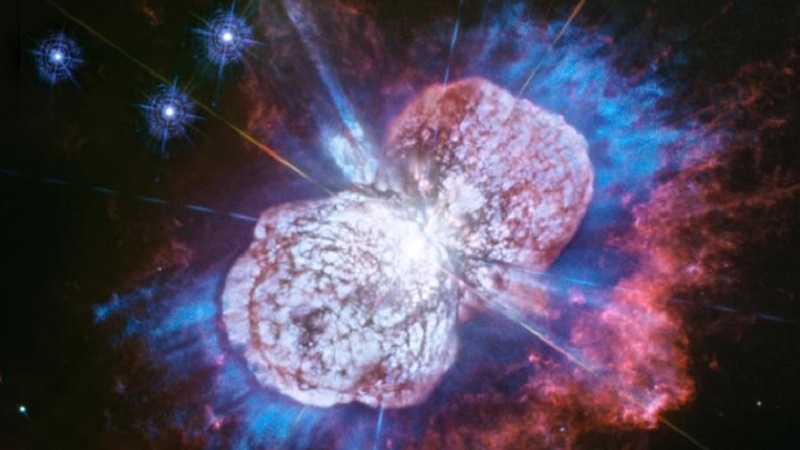Hubble Space Telescope Snapped “Fireworks” Released By Eta Carinae

In the almost two hundred years since it exploded, Eta Carinae has continued uninterrupted to send emissions of gas similar to fireworks into space. Hubble Space Telescope just snapped Eta Carinae’s “fireworks.”
Eta Carinae, which is now a star system 7,500 light-years from Earth consisting of two main stars, was previously a 4th-magnitude star that exploded in 1838. The explosion was so powerful (this is why it was dubbed The Great Eruption) that the star became one of the most luminous celestial bodies in the sky on March 1843. Only after ten years, Eta Carinae could no longer be seen in the sky except with a telescope.
The two stars of the Eta Carinae system are both peculiar. One of them, which is the only known star to create ultraviolet laser radiation, is an enormous star that is believed to explode as a supernova in the foreseeable future.
Imagine slow-motion fireworks that started exploding nearly two centuries ago and haven't stopped since then. This is how you might describe this Hubble photo https://t.co/rEXm2qYYFw pic.twitter.com/iiITMgXC9L
— HUBBLE (@HUBBLE_space) July 1, 2019
Hubble Space Telescope Snapped “Fireworks” Released By Eta Carinae
Astronomers assume that the explosion will be more massive than the Great Eruption, but they do not know yet if it has already taken place because the effects of the blast will reach Earth in 7,500 years. The other one is around 30-80 times bigger than our Solar System’s sun. Eta Carinae is surrounded by the Homunculus Nebula, which contains expelled gas from the Great Eruption. Homunculus Nebula is composed of two gas lobes and a skirt’ that resembles fireworks, and they all emanate heat.
Hubble Space Telescope, the one that gathered images of the Homunculus Nebula and Eta Carinae over the last decades, photographed them in ultraviolet light. The picture shows and accentuates the gleaming clouds made of gas that reminds one of fireworks, but also the luminous nitrogen in red.
Another beautiful picture captured by Hubble is one in which beams of light soak through the clouds of gas, creating shadows on the clouds. The purpose of using ultraviolet light to capture images of the space is to reveal various details that cannot be seen otherwise. And through that, astronomers can analyze other star systems of nebulae.
0 comments